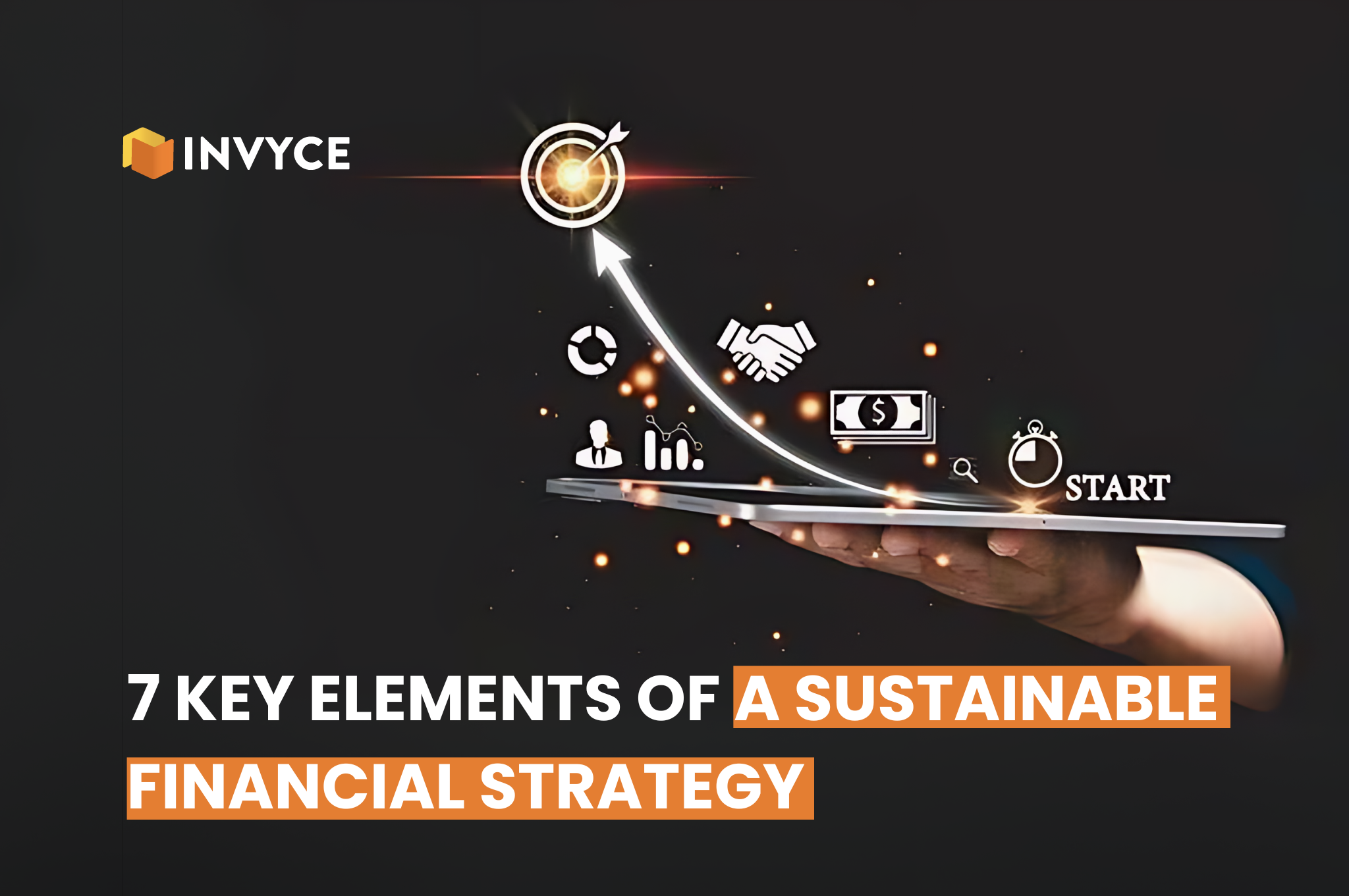26 Aug

Nowadays, having a strong financial strategy is essential for long-term success. It’s not just about managing money it’s about making smart decisions that keep your business stable and growing, even when things change. A sustainable financial strategy helps you navigate challenges, seize opportunities, and ensure your business stays on the right path.
In this article, we’ll break down the key elements of a solid financial strategy, giving you clear guidance on how to build a foundation that supports your business now and in the future. Whether you want to strengthen your current operations or plan for growth, these elements will help you create a long-term financial plan.
1. Long-Term Financial Planning
To ensure your business’s long-term success, you need a clear financial plan. Start by setting specific financial goals that align with where you want your business to go. Break these goals into actionable steps and order them based on what will have the biggest impact.
It’s not just about setting goals—make sure every department in your business knows how they contribute to these goals. Regularly check your progress and adjust your plan as needed to stay on track.
2. Diversification of Revenue Streams
Relying on one source of income can be risky. To build a stronger financial foundation, look for ways to diversify your revenue streams. This means exploring new products, services, or markets that complement your existing offerings.
Start by analyzing your current income sources. Then, identify opportunities to expand into new areas. For example, if you sell software, consider offering training or consulting services. By diversifying, you reduce risk and open up new avenues for growth.
3. Efficient Resource Allocation
Efficiently allocating your resources means getting the most out of every dollar you spend. Start by evaluating your current spending to see where you can improve. Are there areas where you’re spending too much without seeing enough return?
Once you identify these areas, redirect funds to initiatives that offer higher returns. For example, investing in digital tools might streamline operations and improve efficiency, giving you more bang for your investment.
4. Risk Management and Prevention
Every business faces risks, from market changes to economic downturns. To protect your business, you need a strong risk management plan. Start by identifying the biggest risks your business faces and develop strategies to minimize them.
This could involve diversifying suppliers, securing insurance, or setting aside emergency funds. Regularly review your risk management plan to ensure it remains effective as your business and the market evolve.
5. Sustainable Cash Flow Management
Cash flow is the lifeblood of your business. To keep things running smoothly, you need to manage it carefully. You should improve your credit policies to ensure you’re getting paid on time and negotiate better terms with suppliers to improve your cash flow.
Use cash flow forecasting to predict your future needs. This helps you plan for shortfalls and make better decisions about when to invest in growth opportunities.
6. Environmental, Social, and Governance Integration
Incorporating Environmental, Social, and Governance (ESG) factors into your strategy is increasingly important. Start by identifying the ESG issues most relevant to your business, such as reducing your environmental impact or promoting social responsibility.
Develop specific strategies to address these issues, like investing in sustainable technologies or improving workplace diversity. By aligning your business practices with ESG principles, you’re not only doing good but also positioning your business for long-term success.
7. Continuous Monitoring and Adaptation
A sustainable financial strategy requires continuous monitoring and adaptation. Regularly review your financial performance and be ready to adjust your strategy as needed.
Set up systems to track your progress against your goals, and be open to changing course when necessary. Whether it’s adapting to market changes or new regulations, staying flexible ensures your business remains competitive and resilient.
Conclusion
Building a sustainable financial strategy isn’t just about today—it’s about securing your business’s future. By focusing on long-term planning, diversifying your income, efficiently allocating resources, managing risks, ensuring steady cash flow, integrating ESG principles, and continuously monitoring your progress, you’re setting your business up for lasting success. Remember, a strong financial strategy is your roadmap to navigating the challenges and opportunities ahead
Marjina Muskaan has over 5+ years of experience writing about finance, accounting, and enterprise topics. She was previously a senior writer at Invyce.com, where she created engaging and informative content that made complex financial concepts easy to understand.
Related Post
Copyright © 2024 – Powered by uConnect



Marjina Muskaan